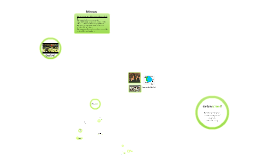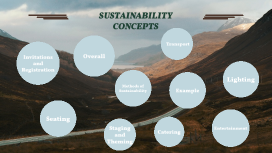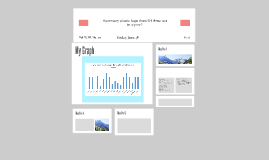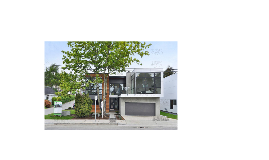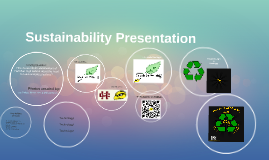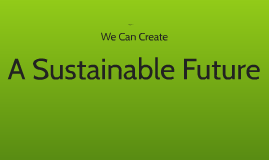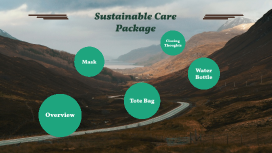Sustainability presentation
Transcript: You can collect rainwater through the use of cisterns, underground tanks, ponds, or rain barrels. You can use this water for drinking (if filtered), irrigation, or other non-potable water uses. You can also collect rainwater from your roof, plaza, or create pervious paving areas. Native plants are important when planning the landscaping because they require little to no irrigation or maintenance. It is also important where you position the plants, especially trees. You want to plant deciduous trees in proper places, so that in the summer it’s leaves hide the sun from coming into the windows, creating a cooler interior atmosphere. However, in the winter, the leaves are lost so the sun can penetrate through the limbs and warm the house. Vegetative roofs are a great way to add plant life as well as insulation to a roof. Photovoltaic roofs are also great, because they produce energy for the house. The only problem is they are expensive and take so much energy to make that it may not be worth it. The technology needs a lot of improvement until it may be worth spending all the money on it. Other roof options just depend on where you are living. In Chico there is little to no snow, so a high pitch roof is not necessary, but there is a lot of rainfall, so a pitch roof is nice. Low flow shower heads, dual-flush toilets, low flow faucets, composting toilet, and drip irrigation are ways to conserve water. These are fixtures that you can put in your home for a fairly small price to the water conservation you will get out of them. The best orientation for a building is southwest. This way the interior of the house receives the best amount of light during the right months. In the winter the sun is lower and the way it moves across the sky allows a lot of natural sunlight into the house for warmth and color. In the hot summer months, the sun is high and behind the house so it is cooler inside the house. Using windows, clerestories, and skylights are effective ways to add natural light throughout the interior. Window position is important. Having minimal windows on the polar side and maximum windows on the equatorial side is a good way to get the best light. Proper ventilation is important for a great indoor atmosphere. This can be done through a complete home fan. Basically when turned on it sucks up all the “old” air from the house and replaces it with new. Windows also help a lot with ventilation, but it is important for them to be double paned in order to protect from the outside elements. Awnings are also important in order to protect from the sun. Adobe is a very eco-friendly option when considering the wall system of a building. It is made up of mud and straw and creates excellent insulation. However, adobe does not allow much fluctuation if the owner plans to remodel or change electrical work. Another great option is using a typical 2x4 stud technique, but with bamboo studs. Bamboo is a very eco-friendly resource. Instead of using typical fiberglass insulation, they now make insulation out of recycled blue jeans, which allows for an eco-friendly skeleton. Reduce off gassing from carpet, furniture, paints, cleaning products, etc. Reduce it by having ventilation from mechanical and/or active sources. Monitor carbon dioxide emissions through detectors and use high efficiency air filters. Use products from Green Seal, Greenguard, and Green Carpet Co. and before occupancy, have a building flush-out. Provide proper ventilation A good foundation is the basis to a strong house. A slab is ideal because it creates a strong hold and does not allow air under the house, so the house stays more insulated. Use recycled or reused materials when building a new building. Reduce the amount of unused space such as hallways, and provide space that can serve multiple functions for possible reuse of the building.






